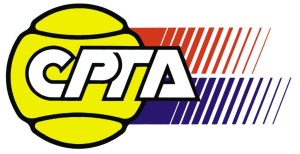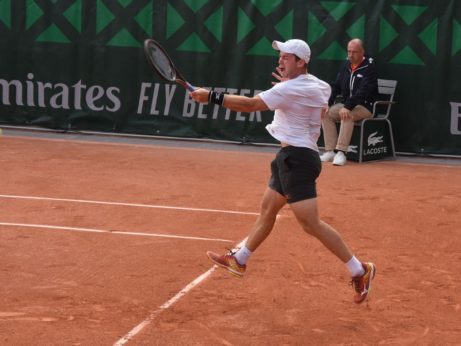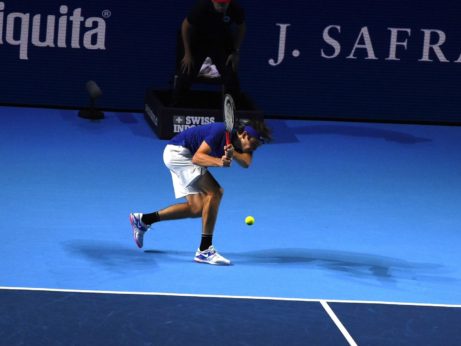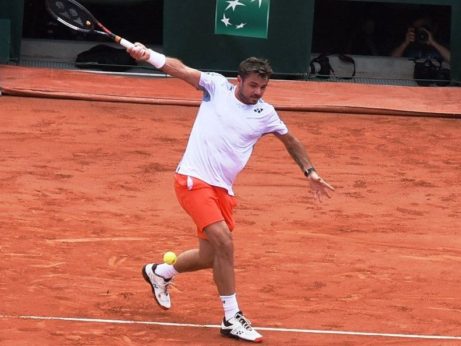Stefanos Tsitsipas – One-handed backhand 3.0 then and now

Young 193 cm (6’4”) tall Greek-Russian Stefanos Tsitsipas (*98 / GRE) belongs to the biggest talents on the men’s tennis tour. He has been developed and is being coached mainly by his father Apostolos.
Stefanos made his first real international breakthrough at the 2014 Orange Bowl, where he came surprisingly all the way to the finals, which he lost in 3 sets (after winning the first set 6/2) to Stefan Kozlov (apparently * 98 / USA), who seemed to profit from a massive undue support of a small spectator group clearly putting Stefanos off, mainly in the second set.
This defeat and the pressure of expectations seemed to influence well-behaved Stefanos in the coming years and he was for quite long not able to book any big junior title to his name. He lost also the 2015 Orange Bowl finals, to Miomir Kecmanovic (*99 / SRB), and was not able to win any of the junior Grand Slam titles. In the end, he finished his junior career with the win at the 2016 Trofeo Bonfiglio (ITA) and with the 2016 U18 title won at the European Junior Tennis Championships in Klosters (SUI).
Stefanos started with the gradual transition to the men’s tour quite early during his junior years and as about the end of June 2017, he has won 5 ITF Features singles titles and reached #186 on the ATP tour already. He also qualified for the main draw at both the 2017 French Open and the 2017 Wimbledon but failed to win any main draw Grand Slam match yet.
The one-handed backhand can be considered as Stefanos’ signature stroke. He belongs to the rather small group of the young players playing the one-handed stroke on the backhand side. In general, the one-handed backhand variety gives a better chance for acceleration but can be rather challenging while receiving (absorbing) powerful strokes and mainly services of the opponents. Only players with excellent stroke technique (Tennis 3.0) based on a good use of the core muscles and an early impact like for example Roger Federer (SUI) and Stan Wawrinka (SUI) can well cope with this situation. Full supination coming from the shoulder activity (rotation) is one of the main principal conditions for a powerful one-handed backhand. The other advantage of the one-handed backhand is then in the rather easier switching between the topspin and slice, both physically and mentally.
The bellow-shown comparisons of Stefanos’ topspin backhand during the 2014 Orange Bowl finals and during the 2017 French Open as well as 2017 US.Open qualifications show that the core stroke elements have been well-established during his junior years already.
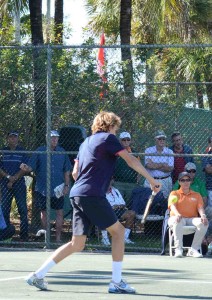
Stefanos Tsitsipas (*98 / GRE) – One-handed backhand 3.0 in a match – direct stance – 1 of 4 – impact far in the front of the body with excellent eye control of the ball/impact zone – 2014 Orange Bowl – Plantation, FL / USA
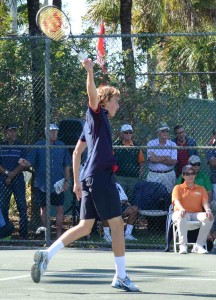
Stefanos Tsitsipas (*98 / GRE) – One-handed backhand 3.0 in a match – direct stance – 2 of 4 – high follow through 1 with full supination – racket has turned almost 180° already, practically straight elbow is one of the principal conditions for an efficient supination – 2014 Orange Bowl – Plantation, FL / USA
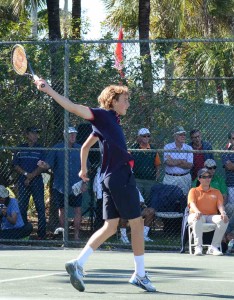
Stefanos Tsitsipas (*98 / GRE) – One-handed backhand 3.0 in a match – direct stance – 3 of 4 – end of follow through 1 – the position of the racket is still well-controlled, mainly by the postural muscle groups – 2014 Orange Bowl – Plantation, FL / USA
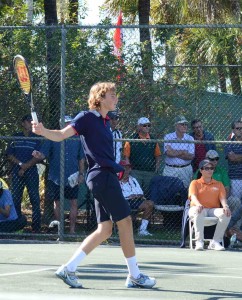
Stefanos Tsitsipas (*98 / GRE) – One-handed backhand 3.0 in a match – direct stance – 4 of 4 – follow through 2 = relaxation – 2014 Orange Bowl – Plantation, FL / USA
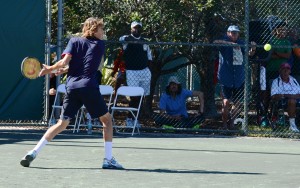
Stefanos Tsitsipas (*98 / GRE) – One-handed backhand 3.0 in a match – direct stance – 1 of 4 – quite long backswing controlled (provided) by the non-dominant (left) hand – 2014 Orange Bowl – Plantation, FL / USA

Stefanos Tsitsipas (*98 / GRE) – One-handed backhand 3.0 in a match – direct stance – 2 of 4 – early follow through 1 with perfect body stability and eye control, the elbow is rising to the shoulder level very early – 2014 Orange Bowl – Plantation, FL / USA
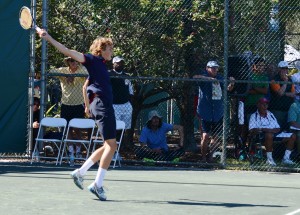
Stefanos Tsitsipas (*98 / GRE) – One-handed backhand 3.0 in a match – direct stance – 3 of 4 – end of follow through 1 – full supination with optimal core and arm stability – 2014 Orange Bowl – Plantation, FL / USA
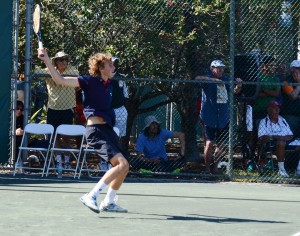
Stefanos Tsitsipas (*98 / GRE) – One-handed backhand 3.0 in a match – direct stane – 4 of 4 – follow through 2 = relaxation & recovery step – 2014 Orange Bowl – Plantation, FL / USA
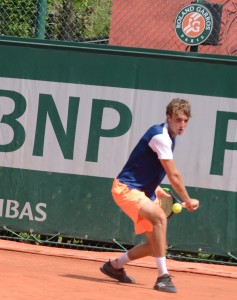
Stefanos Tsitsipas (*98 / GRE) – One-handed backhand 3.0 in the match – neutral stance in a rather defensive position – 1 of 4 – backswing/start of the racket acceleration with perfect eye control of the ball/impact zone – 2017 French Open Qualification – Paris / France
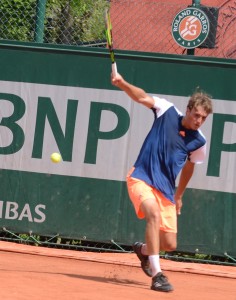
Stefanos Tsitsipas (*98 / GRE) – One-handed backhand 3.0 in the match – 2 of 4 – early follow through 1 with a quite significant lift-off, the elbow is slightly above the shoulder level already – 2017 French Open Qualification – Paris / France
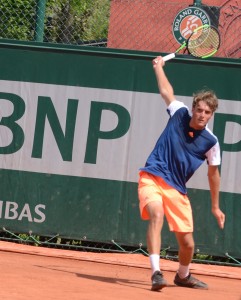
Stefanos Tsitsipas (*98 / GRE) – One-handed backhand 3.0 in the match – 3 of 4 – end of follow through 1 – full supination – slightly falling back is rather negative while defensive – 2017 French Open Qualification – Paris / France
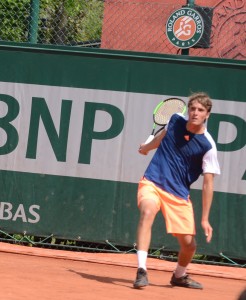
Stefanos Tsitsipas (*98 / GRE) – One-handed backhand 3.0 in the match – 4 of 4 – follow through 2 = relaxation – 2017 French Open Qualification – Paris / France
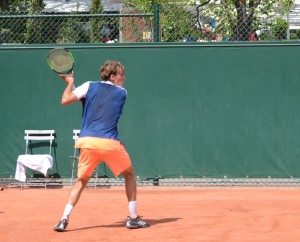
Stefanos Tsitsipas (*98 / GRE) – One-handed backhand 3.0 in the match – direct stance – 1 of 4 – high backswing controlled (provided) by the non-dominant (left) hand- 2017 French Open Qualification – Paris
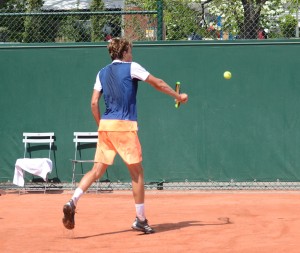
Stefanos Tsitsipas (*98 / GRE) – One-handed backhand 3.0 in the match – 2 of 4 – a moment shortly before the impact far in front of the body – perfect space for the stroke and well-controlled body posture. massive push-off – 2017 French Open Qualification – Paris / France
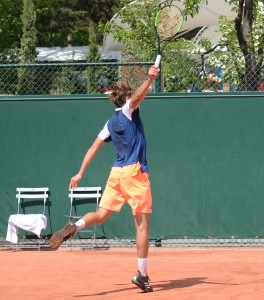
Stefanos Tsitsipas (*98 / GRE) – One-handed backhand 3.0 in the match – 3 of 4 – early follow through 1 with excellent body and racket control – elbow is clearly above the shoulder level – 2017 French Open Qualification – Paris / France
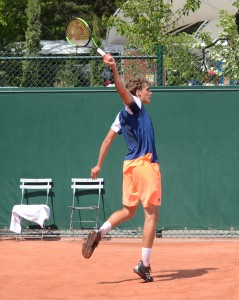
Stefanos Tsitsipas (*98 / GRE) – One-handed backhand 3.0 in the match – 4 of 4 – end of follow through 1 with full supination – 2017 French Open Qualification – Paris / France
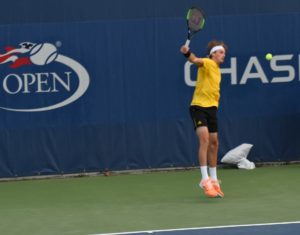
Stefanos Tsitsipas (*98 / GRE) – One-handed backhand 3.0 in a match – 1 of 2 – follow through 1 – 2017 US.Open Qualification – New York / USA
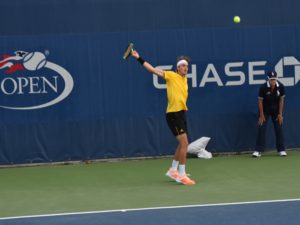
Stefanos Tsitsipas (*98 / GRE) – One-handed backhand 3.0 in a match – 2 of 2 – end of follow through 1 – full supination, the elbow is above the shoulder level, excellent body posture control – 2017 US.Open Qualification – New York / USA
This article covers certain aspects of Stefanos Tsitsipas’ one-handed backhand and the one-handed backhand in general only! Further extensive photo galleries and more distinct details about his one-handed backhand and other strokes as well as about the strokes of other players are available upon a qualified request at drmgb11(at)gmail.com. Some significant information/details of this kind, necessary for the peak performance in modern tennis as well as for a sustainable tennis training/development in general, are being discussed also in the seminar “TENNIS 3.0 – Future of the Game”, which is available worldwide upon request – www.tennis30.com / www.tennis30.cz
Photos (December 2014, May 2017 & August 2017) & text (July 2017 & January 2018) copyright by Dr. Martin G. Baroch. Any further publication of either any of the photos and/or text with the explicit written permission from the author/copyright owner only! All instruction provided reflects just the personal opinion of the author and neither the author nor the CPTA accepts any responsibility for potential damages, direct or implied, of any kind!!
